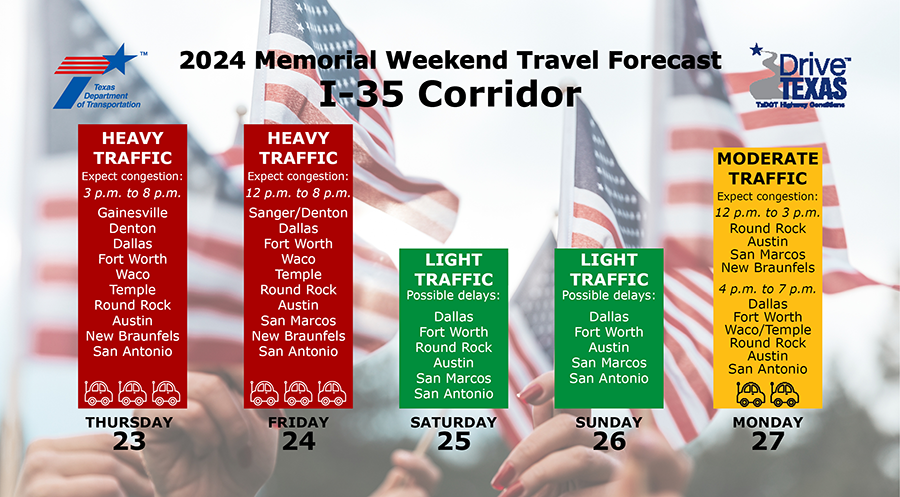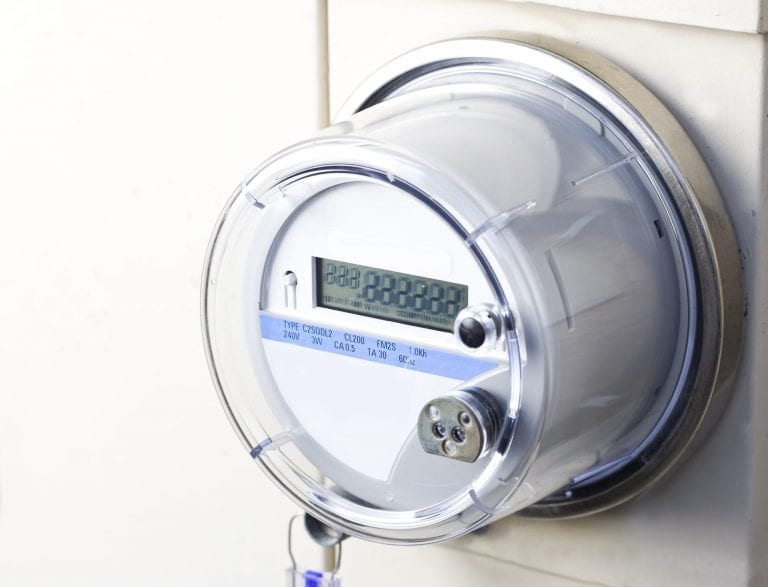
EL PASO, Texas — Are you traveling for Memorial Day? You’re not the only one.
AAA projects 43.8 million travelers will travel 50 miles or more from home over the Memorial Day travel period, and travel centers throughout the state are preparing to help drivers around the clock.
Proper planning is critical if you plan to take that road trip. The first part of that plan is figuring out when to hit the road. TxDOT has looked at traffic in years past and predicted the best times to travel on interstate corridors throughout the state. For most areas, Thursday has the heaviest traffic while Sunday has the lightest.
Another part of planning is preparing your vehicle.
“Vehicle maintenance is probably the most important thing you need to check before you hit the highway,” said Martin Morales, TxDOT El Paso HERO training manager. “A lot of us tend to rely on technology — the tire pressure sensors, etc. — but it’s important to physically check your tire pressure.”
Morales said day-to-day trips are typically fine for vehicles, but maintenance is even more important for extended highway miles.
TxDOT also has 12 travel information centers staffed daily with travel counselors that can help travelers with information and a needed break from the road.
Travel counselors at the Anthony, Texas, location welcome visitors from across the globe and offer the following insight:
- Accommodations: Many times, travelers hit the road during holidays/high volume travel times without considering availability of accommodations and prices of hotels & RV parks during these times. So, they may not be able to find a place to say. They sometimes must reroute their travel plans because of no availability or affordability. Also parking at rest areas can sometimes be full during these times making it hard to find a place to stop and rest.
- Miscalculating travel times: We often see travels arrive to west Texas and they do not realize we are on two times zones. So that is an extra hour added to their trip when headed east passed Van Horn. Also google maps does not consider stops…restroom, gas, eating, and resting. So, factor in time change, restroom, gas, eating, and resting/stretching them legs.
- Always check the weather: A variety of factors can hamper travel plans; depending on the time of year, you may experience flooding, icy, or windy conditions. i.e. RV’ers are not fond of high winds as this makes for hazardous driving conditions causing high clearance RV’s or towed RV trailers to become susceptible to being pushed off the road.
Texas has many top spots to visit, but as the second largest state, drivers may also encounter a change in roadway type and terrain.
Drivers should not let their guard down just because there’s less traffic on rural roads. Rural roads can be more narrow and winding than interstates, so it’s important to pay attention and drive at a safe speed. Drivers in rural areas can also encounter large, slow-moving vehicles and equipment, which can create potentially dangerous situations.
It’s also good to prepare for roadside emergencies before traveling through the state’s rural areas. Cell coverage can often be spotty. Make sure you’ve mapped your route ahead of your trip, filled your gas tank before getting on the road, and packed an emergency kit in your vehicle.
Drivers can plan their route and check road conditions at DriveTexas.org or 1-800-452-9292.
Regardless of when you plan to travel, make sure your vehicle is ready for that road trip. HERO operators say vehicle maintenance becomes more important as temperatures spike across the state. Save TxDOT highway roadside assistance numbers before you head out.
Source: TxDOT








